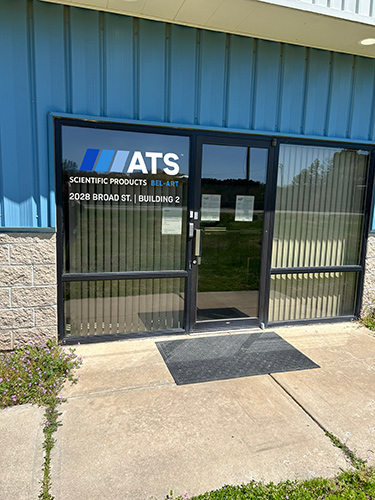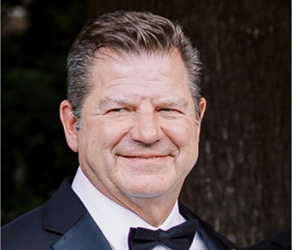Lessons from rebranding five plants: how to standardize visuals and prioritize safety.
Co-authored by Eric Wadsworth, Director of Global Supply Chain, Scientific Products and Peter Rittenhouse, Owner, SpeedPro Allentown, PA
Rebranding a single manufacturing facility is no small feat. But multiply that by five and add the complexity of operating across several states, and you have a high-stakes challenge that tests everything from cross-functional communication to brand consistency and on-the-ground execution.
Scientific Products recently undertook this type of rebranding with facilities in Pennsylvania, Maryland, New York, and New Jersey. The goal was to translate the Scientific Products brand vision into a consistent, scalable signage system across all sites, drawing on a close collaboration between the internal facilities team and the visual communications expertise from SpeedPro Allentown.
Together, we approached the project from both the operational and design perspectives, which proved critical to executing a cohesive, efficient rollout. The project not only elevated our brand presence but also enhanced safety, improved navigation, and gave employees a renewed sense of pride in their workplaces.
Here are three key lessons we learned along the way that other manufacturing leaders can use when rebranding across multiple locations:
At the onset, our facilities had a wide mix of existing signage—some outdated, some poorly placed, and much of it inconsistent across locations. This patchwork approach created confusion for employees, visitors, and delivery drivers while diluting the impact of the brand itself.
The solution? Establish universal templates. That meant using one logo, one set of colors, and consistent sign sizes and placements across every site. Even with minimal initial input, a clear visual identity emerged through a templated system that we could replicate, tweak slightly for site-specific needs, and scale. This ensured brand alignment without reinventing the wheel at every facility.
The visual refresh also helped tell a unified story about who we are which solidified our identity across sites that had previously operated in silos. And while the process involved everything from rethinking placements to removing legacy signage, it ultimately created cleaner, more navigable, and more professional-looking facilities.

Facility signage is about more than aesthetics. It’s also a critical part of workplace safety. As part of the rebrand, we took the opportunity to evaluate all safety signage and emergency response visibility. That meant reflective exit signs on both the interior and exterior of doors, clearly labeled entry points, and uniform numbering across facilities.
One of the most impactful changes: numbering external doors so emergency responders can quickly locate the right entry during a crisis. It’s a small detail that can have life-saving implications. We also trained teams to associate specific exit routes with door numbers so that in the event of a power outage or emergency, there’s no ambiguity about where to go.
By designing signage through a safety-first lens, we not only improved emergency preparedness but also empowered employees to navigate their environment with greater confidence.
No two facilities are exactly alike. That’s why it’s essential to balance brand consistency with local context. In our case, site leads played a major role in identifying practical improvements, from labeling specific evacuation doors to adding signage in overlooked areas like internal hallways and break rooms.
Collaborating closely with local plant managers helped us tailor signage to real workflows and address operational blind spots. At the same time, we relied on signage experts to guide everything from design choices to material selection. Having a partner who understood visibility standards, placement best practices, and the nuances of signage in industrial environments helped us move quickly and make informed decisions.
For example, early in the project, the SpeedPro Allentown team visited every site in person to assess lighting needs, visibility challenges, and optimal sizing. That level of proactive engagement made all the difference in execution.
It’s easy to focus on curb appeal and overlook what’s happening inside the facility. However, some of the most meaningful upgrades we made were in interior spaces such as office walls, production floors, and break rooms. A refreshed brand shouldn’t stop at the front entrance. It should extend across the entire employee experience.
For us, the rebrand became more than a signage project. It boosted morale, created cohesion across disparate teams, and gave our people a renewed sense of pride in where they work. That’s something any manufacturing organization, regardless of size, can and should strive for. In the end, the question isn’t whether you can afford to rebrand your facilities. It’s whether you can afford not to when the potential benefits extend far beyond aesthetics to safety, efficiency, and organizational unity.
About the Authors:

Peter Rittenhouse is the owner of SpeedPro Allentown. He enjoys building, creating, and improving products and organizations through people, high standards, and positive energy. He believes in strong processes to sustain profitable operations; by applying best practices with discipline and the proper measures.

Eric Wadsworth is the Director of Global Supply Chain at Scientific Products. He has several years of experience in supply chain management and operations. He obtained a Bachelor’s degree in Supply Chain Management and Finance from Syracuse University between 2004 and 2008. Eric later pursued an Executive MBA in Global Business from the Georgia Institute of Technology from 2016 to 2017. Eric has held several roles in operations, supply chain, and materials.
From tradition to transformation Sequoia Brass & Copper has stood for excellence in American manufacturing. In this episode, we sit down with Kim MacFarlane, President of Sequoia Brass & Copper, to hear the inspiring story of a family-owned company founded by her father, built on craftsmanship, trust, and a relentless commitment to quality. Kim shares how she’s guided the company through the challenges of modern industry while honoring its heritage, and how the next chapter will be carried forward by her son Kyle. This is more than a story of brass and copper; it’s about resilience, innovation, and the enduring strength of family legacy. If you’ve ever wondered how tradition can meet the demands of today’s industry hit play and be inspired.